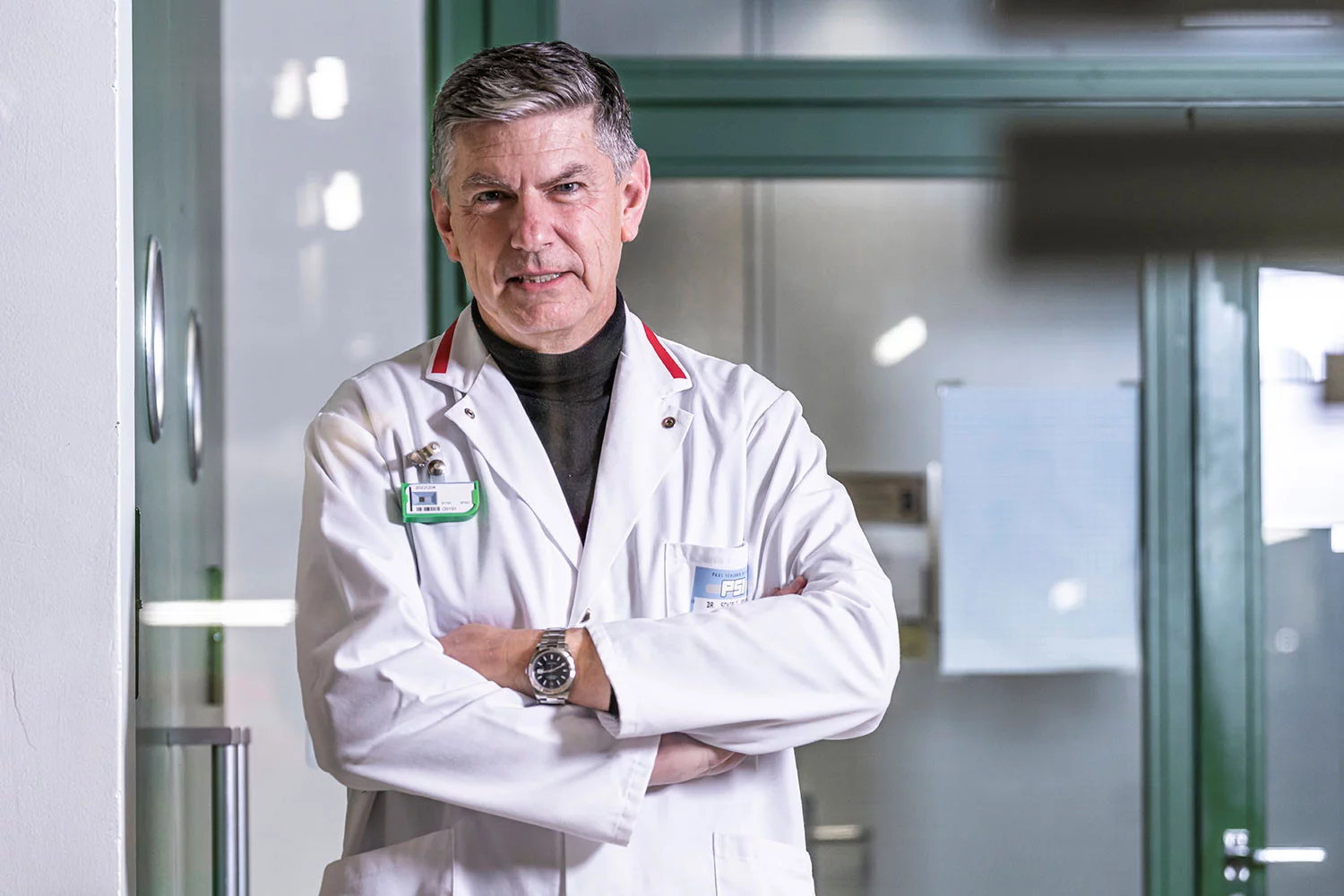HIPA, PSI’s proton accelerator facility, is due for a two-part upgrade over the period 2025 to 2028. The ETH Board has now put forward the relevant plan for the forthcoming Swiss Roadmap for Research Infrastructures 2023. Preparations for the two-part upgrade are already under way.
Mr Schibli, PSI is well known for its large research facilities. So perhaps it’s surprising to learn that PSI also produces medicines for treating tumours, known as radiopharmaceuticals. How does that fit in?
Roger Schibli: Medically established radiopharmaceuticals are produced fresh every day at hospitals or commercial radiopharmacies. At PSI, on the other hand, we produce new, experimental agents. In each case, these are drugs that carry radioactive isotopes, so-called radionuclides. In the future, we want to use the many high-energy protons from HIPA for the production of our radionuclides at PSI. This will open up production routes for new radionuclides that have never been studied before and are unparalleled in quantity and quality.
What is the current status for the use of radionuclides in cancer treatment?
The idea of using radionuclides to treat tumours dates back to the 1950s. The radioactive isotope Iodine-131 was produced since the nuclear fission of uranium was first discovered. Because iodine migrates selectively into the thyroid, it was used as one of the best forms of treatment for thyroid carcinomas till today. In the last 10 to 15 years, researchers have realised that other radionuclides could be used to treat so-called neuroendocrine tumours, cancerous growths in hormone-producing glandular tissue. In addition, the chemistry which is utilised to bind the isotopes to carrier molecules, which in turn dock with the tumour cells, was developed at the University Hospital of Basel and elsewhere.
And now?
In the last five years we have experienced a real boom in radiopharmaceuticals. The search is now on for bespoke radionuclides. As a simple example: when treating a patient with extremely small metastases, a different radionuclide is required than when treating large metastases.
Is it always about metastases?
Yes. Surgery or external irradiation is more suitable for a single cancer lesion – usually the primary tumour. Radiopharmaceuticals are the best choice when surgery and external irradiation are not an option or chemotherapy has failed. In other words, in what for many years had been considered hopeless cases. We want to develop theranostics for these patients.
What does the term theranostics mean?
Theranostics describes the combination of therapy and diagnostics. This is the new standard in radiopharmacy: the diagnostic and the therapeutic radionuclide belong in the best case to the same element, i.e. to the same atomic species. This means that they behave identically in the body. In this way, not only can we localize the metastases during diagnostics, but we can also predict which metastases will absorb a lot of the therapeutic agent and which metastases will still absorb too little. Then we can react accordingly, and that's exactly what we mean when we talk about personalized therapy.
What does the upgrade TATTOOS entail?
TATTOOS, which we are building together with the University of Zurich and the University Hospital Zurich, will be a completely new facility, and a world first. Here at PSI, the facility will include a new proton beam line as well as new targets, a mass separator and laboratories for the processing of novel radionuclides. The targets are multiple thin metal discs connected in series. When the high-energy protons hit the discs, a large number of radionuclides are produced and the discs become very hot – we are talking more than 2,000 degrees Celsius. In the process, many of the radionuclides evaporate and we can collect them. Then we isolate the radionuclides we want, using mass spectrometry and chemical separation methods.
How does mass spectrometry work?
In this process, lasers are used to ionize a specific type of isotope so that it can be separated even better. PSI is already very well positioned in terms of laser physics and also works closely with CERN in this field. We can now build on this.
When can we expect these new radiopharmaceuticals to be used in hospitals?
The development of radiopharmaceuticals, not unlike other drugs, is a lengthy process over many years. With TATTOOS, we are entering completely new territory and it will take several years and many preclinical experiments before we can test a new radiopharmaceutical in patients.
Interview: Paul Scherrer Institute/Laura Hennemann
Further information
- News on IMPACT
- A two-part upgrade for the proton accelerator – Text published on 19 December 2022
- “A jewel we must treasure” – Interview with Klaus Kirch on HIMB as part of IMPACT, published on 19 December 2022
- Making tumour diagnosis kinder to kidneys – Media release of 3 October 2022
- Brilliant medicines – Article of 26 November 2019
Contact
Prof. Dr. Roger Schibli
Head of Centre for Radiopharmaceutical Sciences
Paul Scherrer Institute, Forschungsstrasse 111, 5232 Villigen PSI, Switzerland
Telephone: +41 56 310 28 37, e-mail: roger.schibli@psi.ch [German, English]
Copyright
PSI provides image and/or video material free of charge for media coverage of the content of the above text. Use of this material for other purposes is not permitted. This also includes the transfer of the image and video material into databases as well as sale by third parties.

